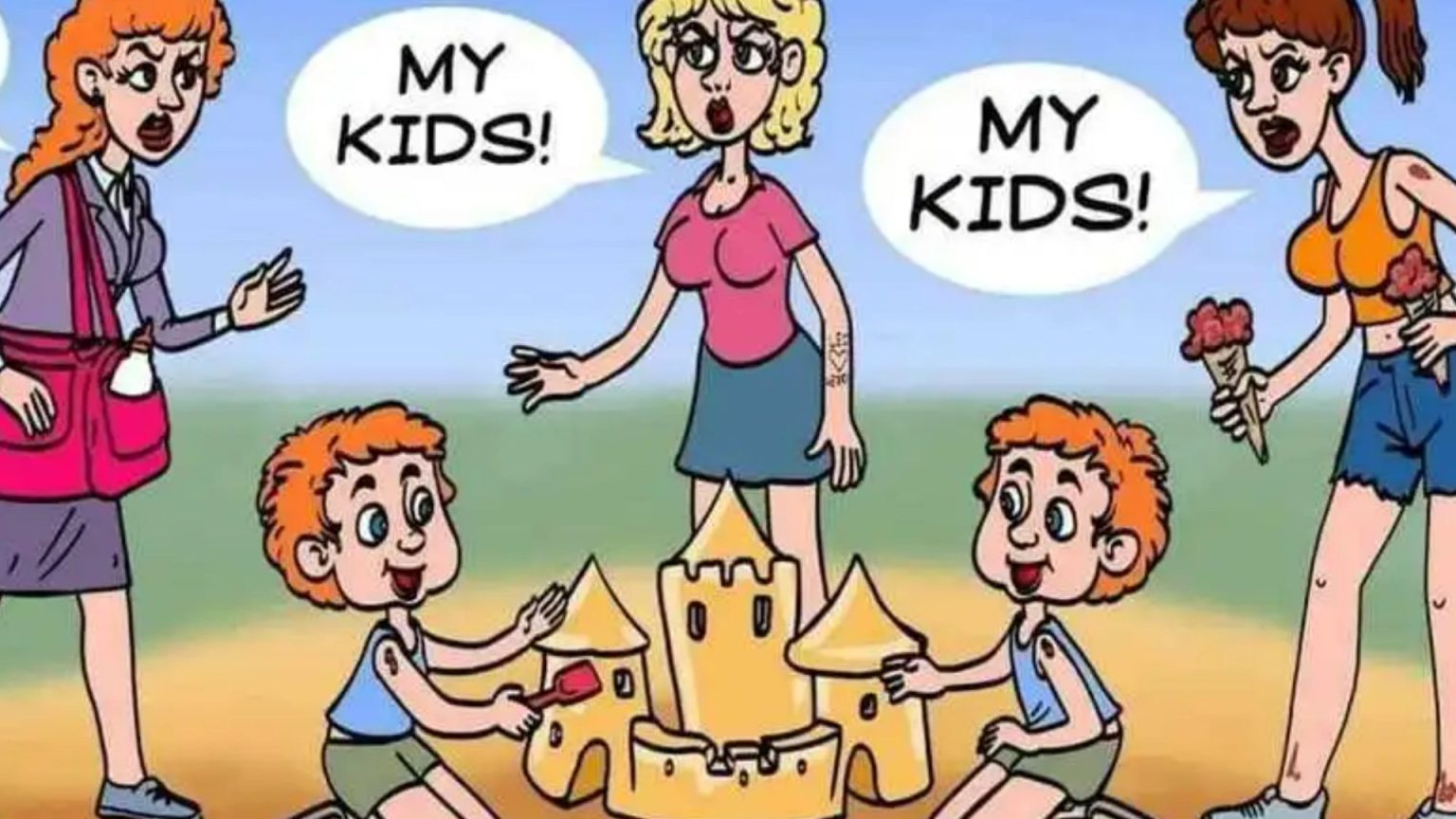This brain teaser presents a scenario involving three women and two seemingly identical twin boys on a beach, challenging the observer to determine the true mother of the children. The puzzle sets a time limit of 10 seconds, implying a readily discernible clue for those with sharp observation skills. The initial description highlights the unusual nature of three women simultaneously claiming the same two children, raising suspicions of either mistaken identity or intentional child abduction. The setting, a public beach, is suggested as a potential location for such an incident, with the possibility of a mother being momentarily distracted while her children are targeted. The puzzle also humorously considers the less likely scenario of two visually impaired women mistaking the twins for their own.
The puzzle encourages scrutiny of the image, suggesting that the solution lies in the smaller details, particularly those on the skin. It emphasizes the perplexed and concerned state of the true mother, urging the observer to analyze the visual cues presented by each woman: the red hair of the woman on the left, the two ice creams held by the woman on the right, and the central positioning of the middle woman, potentially guarding the children. The puzzle then provides a direct clue, advising closer examination of skin details. Before revealing the solution, the text digresses to discuss the cognitive benefits of puzzles and brain teasers.
The article transitions into a discussion of the benefits of engaging with optical illusions and brain teasers. It posits that such activities stimulate cognitive function, enhance problem-solving skills, improve memory, foster creativity, and improve focus and attention. These challenges require active engagement and analysis, promoting mental agility and flexibility. The process of deciphering visual information or logical puzzles strengthens analytical thinking and problem-solving abilities. The act of remembering patterns, details, or previous attempts contributes to better memory function. Furthermore, the need to think creatively and approach problems from different perspectives fosters innovative thought processes. The concentration required to solve these puzzles can also lead to improved focus and attention span.
Beyond the cognitive benefits, the article highlights the stress-relieving aspect of puzzles and brain teasers. The engaging nature of these activities provides a form of mental escape and relaxation, offering a break from daily stressors and promoting a sense of accomplishment upon successful completion. This makes them a suitable activity for breaks during work or other demanding activities, providing a refreshing mental workout while also offering a form of entertainment. The text then circles back to the original puzzle, presenting the solution.
The solution reveals that the woman on the right is the true mother, indicated by a matching birthmark shared by her and the two children. This detail, easily overlooked in a cursory glance, highlights the importance of careful observation and attention to detail in solving such puzzles. The puzzle then concludes by offering other visual challenges, including identifying a hidden bear in a wintry scene and counting the number of animals in another image. These additional puzzles reinforce the theme of visual acuity and analytical thinking, encouraging readers to apply the same skills used in the initial puzzle to these new challenges.
The inclusion of multiple puzzles serves to further engage the reader and provide additional opportunities to practice the cognitive skills discussed earlier. The puzzles vary in difficulty and type, offering a diverse range of challenges that cater to different cognitive strengths. The winter scene puzzle tests the ability to discern camouflaged objects, while the animal counting puzzle challenges pattern recognition and spatial awareness. By presenting a series of puzzles, the article reinforces the message of the importance and enjoyment of mental exercises.
In summary, the article presents a seemingly simple puzzle that underscores the importance of observation and attention to detail. It uses this puzzle as a springboard to discuss the broader benefits of engaging with brain teasers and optical illusions, highlighting their positive impact on cognitive function, problem-solving skills, memory, creativity, and focus. Furthermore, it emphasizes the stress-relieving aspect of these activities, positioning them as a beneficial form of entertainment. The inclusion of additional puzzles reinforces the core message and provides further opportunities for readers to test their cognitive abilities while enjoying a mental challenge.




